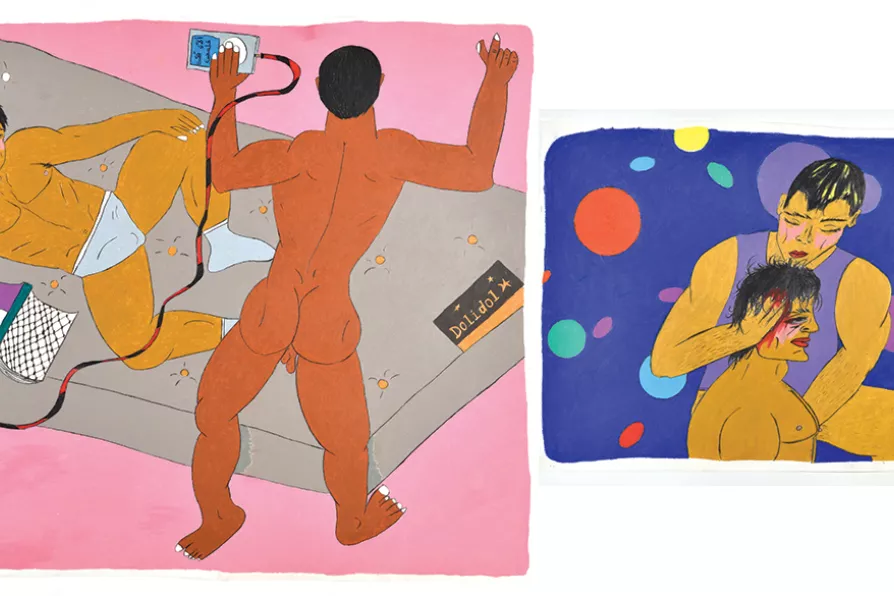MARIA DUARTE picks the best and worst of a crowded year of films
Riotous colour and queer resistance from the Maghreb
LEO BOIX recommends a refreshing, non-Western and subversive look at what it means to be LGBTQI+ in Morocco

 Soufiane Ababri Bedwork, 2023 (L to R) Men in the sun; La Reparation
[Rebecca Fanuele]
Soufiane Ababri Bedwork, 2023 (L to R) Men in the sun; La Reparation
[Rebecca Fanuele]
Soufiane Ababri: Their mouths were full of bumblebees but it was me who was pollinated
The Curve, Barbican
SINCE the so-called Arab Spring of 2011, Morocco has seen a growing social movement that has managed to mobilise large numbers of citizens around socio-economic, political and identity demands.
Within those groups, activists who identified as LGBTQI+ brought forward necessary discussions around sexual orientation and the rights of that specific community within contemporary Morocco and in the wider Arab world.
Moroccan artist Soufiane Ababri (b1985) has added his own voice to the struggle with a dazzling art commission currently at the Barbican’s Curve Gallery — his first solo exhibition at a major British institution.
Similar stories

WILL STONE applauds a fine production that endures because its ever-relevant portrait of persecution

This is poetry in paint, spectacular but never spectacle for its own sake, writes JAN WOOLF

While the group known as the Colourists certainly reinvigorated Scottish painting, a new show is a welcome chance to reassess them, writes ANGUS REID

LEO BOIX reviews Cuban poet Carlos Pintado; Mexican poet Diana Garza Islas; Mexican American writer and critic Rigoberto Gonzalez; and Brazilian poet Haroldo de Campos










